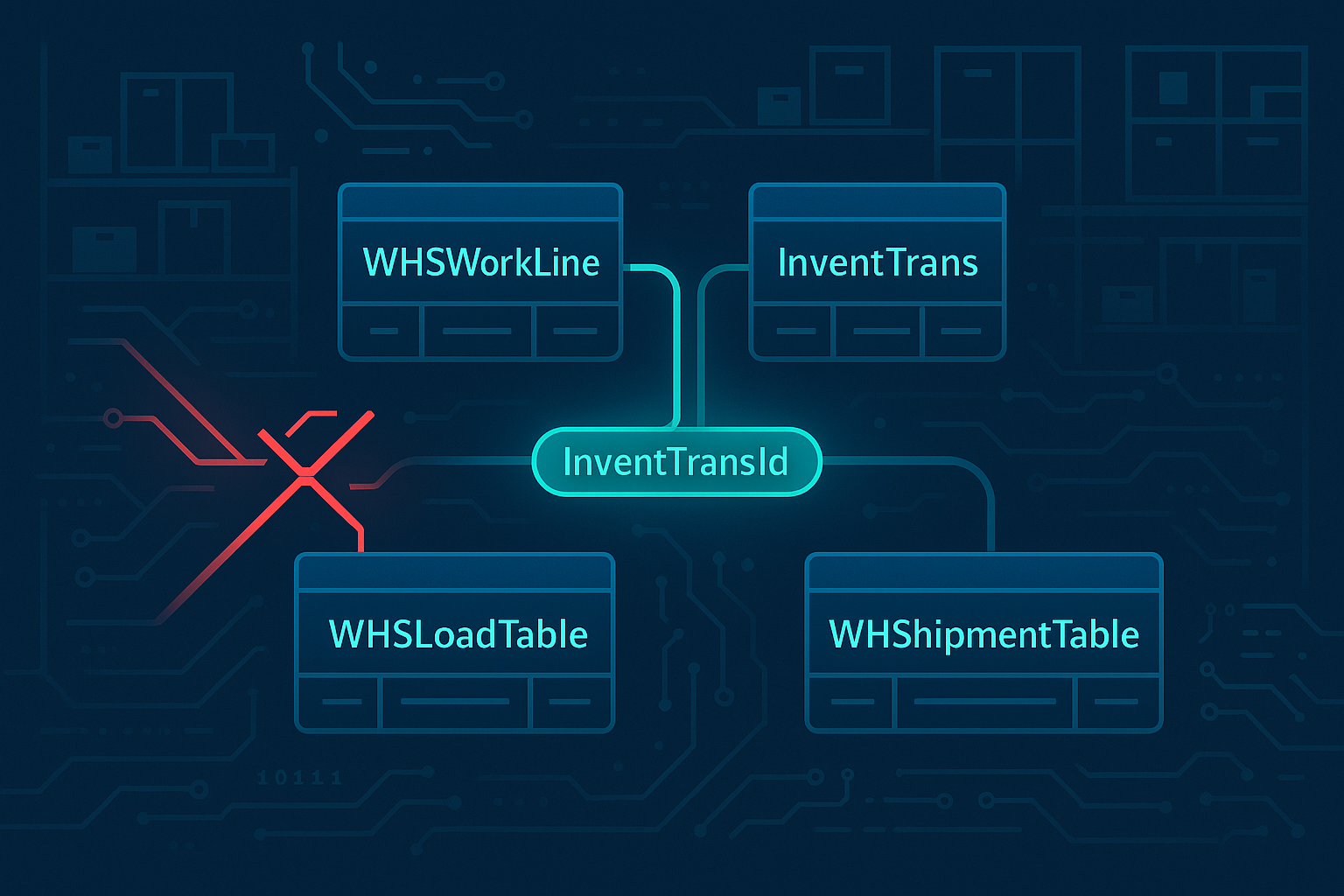In complex warehouse operations in the x++ language for Dynamics 365 Finance and Operations, data is only as reliable as the links that tie your tables together. When developers rely on dynamic query construction in Finance and Operations, the addLink method often becomes your thread that connects work lines, shipments, and inventory records.

At first glance it feels like a simple convenience, letting you join sources with a single call. But beneath that simplicity lies some fragility, because a small mistake in argument order can unravel the accuracy of your warehouse data. Picture an infographic appearing here, with glowing links between tables, one correct and one twisted, capturing the contrast between precision and peril.
When addLink Turns Against You in Warehouse Queries
In warehouse management modules of Dynamics 365 Finance and Operations, queries often span multiple operational tables: work headers, work lines, loads, shipments, and related inventory transactions. Developers lean heavily on the SysQuery framework to build these joins dynamically, and addLink often appears as the glue between sources. But here the very method that makes query construction quick can also introduce silent corruption if misused.
Imagine building a query to join WHSWorkLine with InventTrans so that work lines can be enriched with the underlying inventory transactions. The natural link is on InventTransId, and written correctly it looks like this:
Query q = new Query();
QueryBuildDataSource workLineDs = q.addDataSource(tableNum(WHSWorkLine));
QueryBuildDataSource inventTransDs = workLineDs.addDataSource(tableNum(InventTrans));
inventTransDs.addLink(fieldNum(WHSWorkLine, InventTransId),
fieldNum(InventTrans, InventTransId));
The SQL is clean:
SELECT *
FROM WHSWorkLine
JOIN InventTrans
ON WHSWorkLine.InventTransId = InventTrans.InventTransId
Now consider a developer who accidentally inverts the order of parameters, writing addLink(fieldNum(InventTrans, InventTransId), fieldNum(WHSWorkLine, InventTransId));. The SQL no longer reflects intent. Instead of joining on InventTransId, the generated query links two entirely unrelated fields—perhaps Qty in one table to ItemId in another—depending on the internal field IDs at that moment. Because both happen to be strings or integers, SQL happily accepts the condition, and the result set looks plausible at first glance. In a warehouse context, that can mean work lines tied to the wrong transactions, producing misleading totals, wrong load assignments, or invalid picking instructions.
The danger does not stop there. Suppose the tables are later extended. A customization adds new tracking dimensions to WHSWorkLine or new audit fields to InventTrans. The field IDs shift, and the same inverted call to addLink suddenly resolves differently. A query that previously returned nonsense but at least ran consistently now produces a runtime error, or worse, begins linking fields that line up in type but carry no semantic relationship. The warehouse clerk may see mismatched inventory quantities or loads assigned to the wrong shipment, with no obvious sign that the bug comes from a single swapped parameter.
A similar trap emerges when joining WHSLoadTable to WHSShipmentTable. Developers may assume that because the join is “obvious” on ShipmentId, they can write addLink in either order. But X++ does not treat the parameters symmetrically. The first argument always refers to the parent data source, and the second to the child. If the order is reversed, the method misinterprets field IDs and attempts to “correct” them internally. That correction is brittle, tied to the number of fields in the table. Add a few custom fields to WHSShipmentTable—perhaps to track carrier notes or customs data—and suddenly the safeguard collapses, leaving the query to bind unrelated columns together.
These scenarios in warehousing underline the broader lesson: addLink is not forgiving, and developers cannot rely on SQL-like symmetry in its arguments. The method operates in the world of field IDs, not field names, and any inversion of order opens the door to subtle corruption. In operational areas like warehousing, where queries drive pick lists, replenishment jobs, and load confirmations, the cost of a hidden join bug is magnified. Mislinked records ripple into inventory inaccuracies and shipment errors that affect physical operations.
The only safe practice is strict discipline. Always verify the order of parameters, always check the generated SQL, and never assume that addLink will protect you from mistakes. Developers working with warehouse tables should build a habit of using fieldNum calls deliberately, double-checking parent versus child data sources, and testing queries under extension scenarios. What looks like a harmless convenience method can, under the hood, destabilize core processes. In warehousing especially, where accuracy is the lifeblood of operations, precision in query building is not optional—it is mandatory.
Have a Question ?
Fill out this short form, one of our Experts will contact you soon.
Call Us Today For Your Free Consultation
Call Now